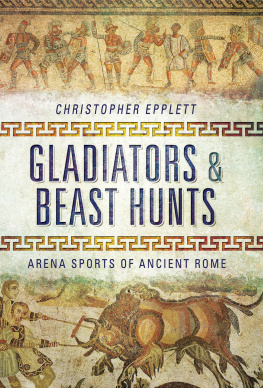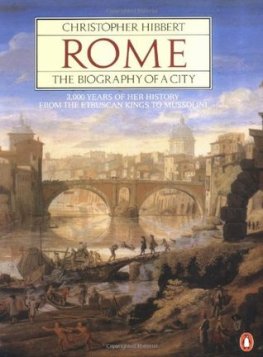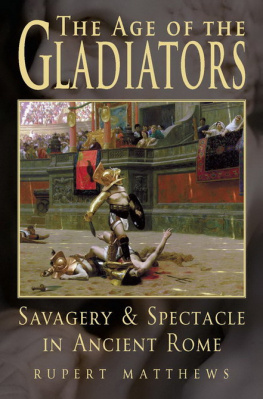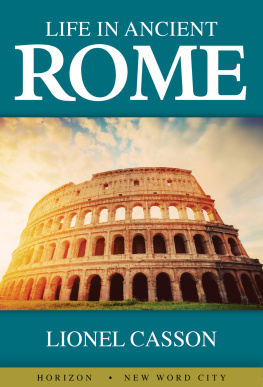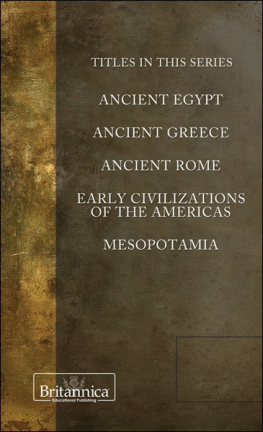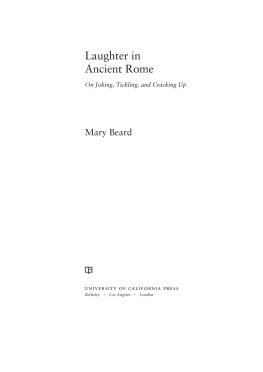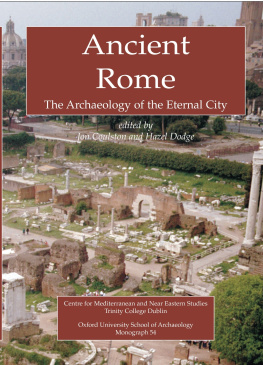Christopher Epplett - Gladiators and Beast Hunts: Arena Sports of Ancient Rome
Here you can read online Christopher Epplett - Gladiators and Beast Hunts: Arena Sports of Ancient Rome full text of the book (entire story) in english for free. Download pdf and epub, get meaning, cover and reviews about this ebook. City: Barnsley, year: 2016, publisher: Pen and Sword, genre: Religion. Description of the work, (preface) as well as reviews are available. Best literature library LitArk.com created for fans of good reading and offers a wide selection of genres:
Romance novel
Science fiction
Adventure
Detective
Science
History
Home and family
Prose
Art
Politics
Computer
Non-fiction
Religion
Business
Children
Humor
Choose a favorite category and find really read worthwhile books. Enjoy immersion in the world of imagination, feel the emotions of the characters or learn something new for yourself, make an fascinating discovery.
- Book:Gladiators and Beast Hunts: Arena Sports of Ancient Rome
- Author:
- Publisher:Pen and Sword
- Genre:
- Year:2016
- City:Barnsley
- Rating:4 / 5
- Favourites:Add to favourites
- Your mark:
- 80
- 1
- 2
- 3
- 4
- 5
Gladiators and Beast Hunts: Arena Sports of Ancient Rome: summary, description and annotation
We offer to read an annotation, description, summary or preface (depends on what the author of the book "Gladiators and Beast Hunts: Arena Sports of Ancient Rome" wrote himself). If you haven't found the necessary information about the book — write in the comments, we will try to find it.
Gladiators and Beast Hunts: Arena Sports of Ancient Rome — read online for free the complete book (whole text) full work
Below is the text of the book, divided by pages. System saving the place of the last page read, allows you to conveniently read the book "Gladiators and Beast Hunts: Arena Sports of Ancient Rome" online for free, without having to search again every time where you left off. Put a bookmark, and you can go to the page where you finished reading at any time.
Font size:
Interval:
Bookmark:

Gladiators and Beast Hunts
For all of my family, friends, and colleagues who've provided encouragement and support for this project. Special thanks to Don Gill and his photographic expertise.
Arena Sports of Ancient Rome
Christopher Epplett

First published in Great Britain in 2016 by
Pen & Sword Military
an imprint of
Pen & Sword Books Ltd
47 Church Street
Barnsley
South Yorkshire
S70 2AS
Copyright Christopher Epplett, 2016
ISBN 978 1 84884 843 6
eISBN 978 1 47389 038 1
Mobi ISBN 978 1 47389 037 4
The right of Christopher Epplett to be identified as the Author of this Work has been asserted by him in accordance with the Copyright, Designs and Patents Act 1988.
A CIP catalogue record for this book is available from the British Library
All rights reserved. No part of this book may be reproduced or transmitted in any form or by any means, electronic or mechanical including photocopying, recording or by any information storage and retrieval system, without permission from the Publisher in writing.
Pen & Sword Books Ltd incorporates the imprints of Pen & Sword Archaeology, Atlas, Aviation, Battleground, Discovery, Family History, History, Maritime, Military, Naval, Politics, Railways, Select, Transport, True Crime, and Fiction, Frontline Books, Leo Cooper, Praetorian Press, Seaforth Publishing and Wharncliffe.
For a complete list of Pen & Sword titles please contact
PEN & SWORD BOOKS LIMITED
47 Church Street, Barnsley, South Yorkshire, S70 2AS, England
E-mail:
Website: www.pen-and-sword.co.uk
Plate 1. Coin of Domitian depicting two-horned African rhinoceros.
Plate 2. Bust of Commodus as Hercules.
Plate 3. Amphitheatre riot in Pompeii.
Plate 4. Portion of Zliten mosaic depicting gladiators and referee.
Plate 5. Magerius mosaic from Smirat.
Plate 6. Amphitheatre mosaic from El Djem.
Plate 7. Tomb relief from Rome.
Plate 8. Relief depicting combat between female gladiators.
Plate 9. Figurine depicting combat between hoplomachus and Thracian.
Plate 10. Mosaic depicting combat between two gladiators, with referee in background.
Plate 11. Relief depicting combat between various animals and armoured venatores .
Plate 12. Gladiator helmets discovered in Pompeii and environs.
Plate 13. Detail of animal combat from Zliten mosaic.
Plate 14. Model of Ludus Magnus in Rome.
Plate 15. Scenes of animal capture and transport from Great Hunt mosaic.
Plate 16. Coins minted to celebrate Philips Secular Games.
Plate 17. Diptych of Areobindus.
(pl. aediles) Roman official whose chief duties included supervision of public games, as well as the maintenance of streets and public buildings.
(pl. censores) Roman official whose chief responsibilities were to conduct a periodic census of the Roman population and to oversee the membership of the Senate.
(pl. cochleae) Apparatus consisting of panels fitted to a central rotating pole which was periodically used in animal spectacles, particularly during the later Empire.
(pl. consules) Chief magistrate of the Roman state during the Republic. Like other Republican magistracies, continued in existence under the Empire.
Condemnation to the beasts. Common form of capital punishment in Rome.
Condemnation to the games. Another form of punishment under Roman law. Unlike damnatio ad bestias , however, those condemned to fight as gladiators or venatores by this sentence at least had a fighting chance to earn their freedom someday.
(pl. editores) The official or private citizen who staged a given spectacle.
(pl. familiae) Group of arena performers overseen by a lanista which could be hired out for various spectacles. Prominent officials (including the emperor himself) or wealthy citizens commonly owned such groups for use in the events they staged.
Loss of status and citizen rights suffered by gladiators and other arena performers.
(pl. lanistae) Term commonly used for trainers of gladiators and/ or managers of arena training schools.
(pl. ludi) Term used, first of all, for the state festivals in Rome (eg Ludi Romani / the Roman Games). Term also used to denote arena training schools such as the Ludus Magnus , the chief gladiatorial training venue in the city of Rome.
(pl. munera) Common term used for an arena spectacle.
(pl. noxii) Term commonly used for the condemned criminals forced to participate in arena spectacles.
(pl. naumachiae) A marine spectacle involving a staged naval combat.
(pl. pali) Term originally denoted the wooden stakes which gladiators commonly used when practicing their weapon strokes. By extension, also came to denote the different ranks of gladiators within a familia (eg the highest rank was known as primus palus (first stake)).
(pl. praetores) Second highest magistracy in the Roman state under the Republic, primarily concerned with legal affairs.
(first/ second stick) Term used respectively for the senior and junior referees in a given gladiatorial munus . Arose from the long sticks which these officials carried in order to separate or otherwise discipline combatants.
(pl. tirones) Term commonly used to denote a novice gladiator.
Magistrate whose chief responsibility was to protect the interests and rights of the common people in Rome.
(pl. venationes) Common term for animal spectacles in Rome, including both combat between men and animals and combat between animals alone.
(pl. vivaria) Generic term used for the enclosures in which various animals were kept.
N umerous works have been written upon the combat sports and spectacles of ancient Rome, events that are among the most famous manifestations of Roman culture. One might wonder, then, as to the need for another book on this topic. My intention is to write a survey of the Roman arena that I hope will be of interest to both a general and a scholarly audience. The two types of arena spectacles that will comprise the main focus of this book are gladiatorial events and staged beast hunts, commonly known as venationes . One very popular Roman sport which will not be discussed in any great detail is chariot racing, an event which, given its importance and popularity in Roman culture, merits its own detailed treatment. What sets my work on the Roman arena apart from those of many other scholars is, first of all, the attention I devote to the venationes . Many surveys of Roman arena spectacles focus primarily upon gladiatorial events and pay substantially less attention to the beast hunts, despite the fact that the latter spectacles were very popular in their own right, and were staged over a longer period. I will also discuss in some detail the all-important infrastructure behind the scenes that ensured the successful staging of untold numbers of both gladiatorial and animal spectacles throughout Roman territory over the course of centuries.
Fortunately, a wide variety of evidence is available to reconstruct the history of such events. First off are the preserved writings of numerous Greek and Roman authors. Most such works do not take the spectacles as their focus of interest, but describe them in passing from time to time. The historians Livy and Tacitus, for example, who wrote annalistic histories of Republican and imperial Rome respectively, describe in the course of their works the noteworthy public events staged by various magistrates and emperors. Similarly, the voluminous correspondence of Cicero, one of the most important figures of the late Republic, occasionally touches upon contemporary spectacles in Rome or other topics pertaining to them.
Next pageFont size:
Interval:
Bookmark:
Similar books «Gladiators and Beast Hunts: Arena Sports of Ancient Rome»
Look at similar books to Gladiators and Beast Hunts: Arena Sports of Ancient Rome. We have selected literature similar in name and meaning in the hope of providing readers with more options to find new, interesting, not yet read works.
Discussion, reviews of the book Gladiators and Beast Hunts: Arena Sports of Ancient Rome and just readers' own opinions. Leave your comments, write what you think about the work, its meaning or the main characters. Specify what exactly you liked and what you didn't like, and why you think so.

